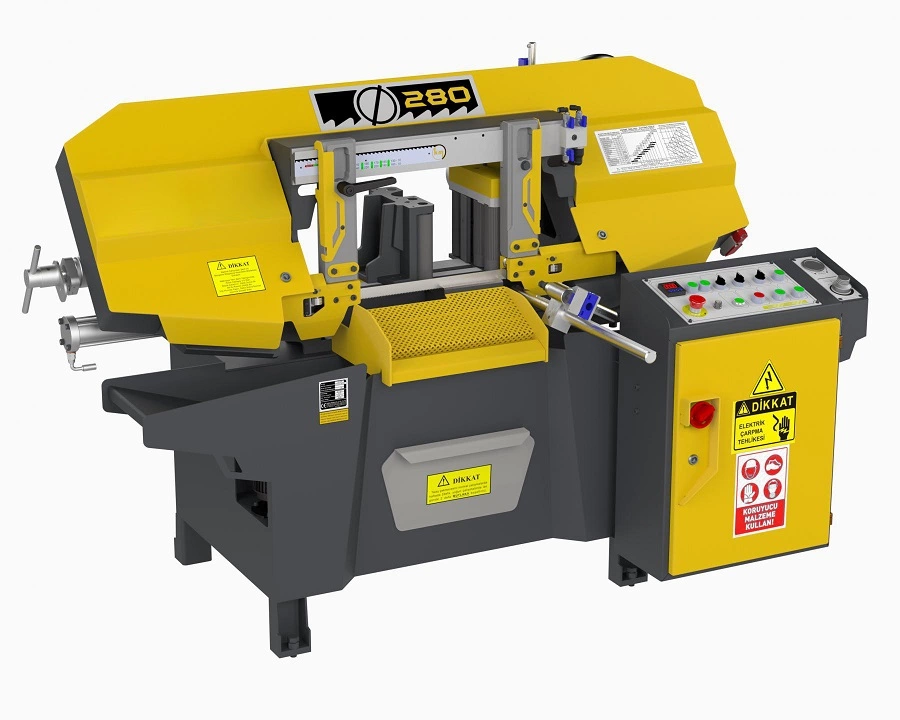
We manufacture a Bandsaw Blade Material to cut metal in different forms. These machines are used in metalworking industries for cutting operations.
Bandsaw blades are made from various materials, each with its own properties and suitability for different cutting applications. Here’s an overview of the common bandsaw blade materials:
High-Carbon Steel (HCS)
High-carbon steel is a versatile and economical material for bandsaw blades. It offers a good balance of hardness, durability, and affordability. HCS blades are suitable for general-purpose cutting, including wood, plastic, and soft metals.
High-Speed Steel (HSS)
High-speed steel is a higher-grade material than HCS, offering improved hardness, wear resistance, and heat tolerance. HSS blades are particularly suitable for cutting hard metals, including stainless steel, tool steel, and aluminum.
Bi-Metal
Bi-metal bandsaw blades combine a back of high-carbon steel for strength and a cutting edge of high-speed steel for hardness and wear resistance. This combination provides a balance of durability and cutting performance, making bi-metal blades suitable for a wide range of materials, including wood, plastic, and metal.
Carbides
Carbide bandsaw blades are the most durable and expensive option. They are tipped with tungsten carbide, an extremely hard and wear-resistant material. Carbide blades are ideal for cutting very hard and abrasive materials, such as cast iron, hardened steel, and titanium.
Here’s a summary of the suitability of each material for different cutting applications:
| Material | Wood | Plastic | Soft Metals | Hard Metals |
|---|---|---|---|---|
| High-Carbon Steel | Good | Good | Good | Limited |
| High-Speed Steel | Limited | Good | Good | Excellent |
| Bi-Metal | Good | Good | Good | Very good |
| Carbides | Limited | Limited | Limited | Excellent |
In addition to the material, other factors to consider when choosing a bandsaw blade include the tooth pitch (TPI), tooth set, blade width, and thickness. The appropriate choice will depend on the specific cutting task and the desired results.
Bandsaw Blade Material
The material of a bandsaw blade is a crucial factor in determining its performance, durability, and suitability for different cutting applications. Here’s an overview of the most common bandsaw blade materials and their characteristics:
High-Carbon Steel
High-carbon steel is the most common material for bandsaw blades due to its balance of hardness, toughness, and affordability. It is suitable for cutting a wide variety of materials, including wood, metal, and plastic. However, high-carbon steel blades may not last as long as other materials, especially in demanding cutting applications.
High-Speed Steel (HSS)
HSS is a type of tool steel with a higher concentration of tungsten and vanadium compared to high-carbon steel. This results in increased hardness, wear resistance, and heat tolerance, making HSS blades ideal for cutting tough materials like stainless steel, tool steel, and other hard metals. However, HSS blades can be more expensive than high-carbon steel blades.
Bi-Metal
Bi-metal blades combine a high-carbon steel backing with a hardened tooth edge made from high-speed steel or another high-performance material. This combination provides the strength and durability of high-carbon steel with the hardness and wear resistance of HSS, making bi-metal blades a versatile choice for cutting a wide range of materials, including wood, metal, and plastic.
Carbon Steel vs. High-Speed Steel vs. Bi-Metal Bandsaw Blades
Here’s a comparison of the three main bandsaw blade materials:
| Material | Advantages | Disadvantages |
|---|---|---|
| High-carbon steel | Affordable, Versatile, Suitable for a wide range of materials | May not last as long as other materials, Less durable for demanding applications |
| High-speed steel (HSS) | High hardness, Wear resistance, Heat tolerance | More expensive than high-carbon steel |
| Bi-metal | Combines strength and durability of high-carbon steel with hardness and wear resistance of HSS | Can be more expensive than high-carbon steel |
drive_spreadsheetE-Tablolar’a aktar
Choosing the Right Bandsaw Blade Material
The choice of bandsaw blade material depends on the specific cutting application and the materials being cut. For general-purpose cutting, high-carbon steel is often sufficient. For tougher materials, HSS or bi-metal blades are recommended. Consider factors such as the thickness of the material, the desired cutting speed, and the frequency of use when making your selection.
Remember, proper blade maintenance and care, including regular cleaning, inspection, and replacement when necessary, are essential to extend the lifespan of your bandsaw blade and ensure optimal cutting performance.
EMS Metalworking Machinery
We design, manufacture and assembly metalworking machinery such as:
- Hydraulic transfer press
- Glass mosaic press
- Hydraulic deep drawing press
- Casting press
- Hydraulic cold forming press
- Hydroforming press
- Composite press
- Silicone rubber moulding press
- Brake pad press
- Melamine press
- SMC & BMC Press
- Labrotaroy press
- Edge cutting trimming machine
- Edge curling machine
- Trimming beading machine
- Trimming joggling machine
- Cookware production line
- Pipe bending machine
- Profile bending machine
- Bandsaw for metal
- Cylindrical welding machine
- Horizontal pres and cookware
- Kitchenware, hotelware
- Bakeware and cuttlery production machinery
as a complete line as well as an individual machine such as:
- Edge cutting trimming beading machines
- Polishing and grinding machines for pot and pans
- Hydraulic drawing presses
- Circle blanking machines
- Riveting machine
- Hole punching machines
- Press feeding machine
You can check our machinery at work at: EMS Metalworking Machinery – YouTube
Applications:
- Beading and ribbing
- Flanging
- Trimming
- Curling
- Lock-seaming
- Ribbing
- Flange-punching
